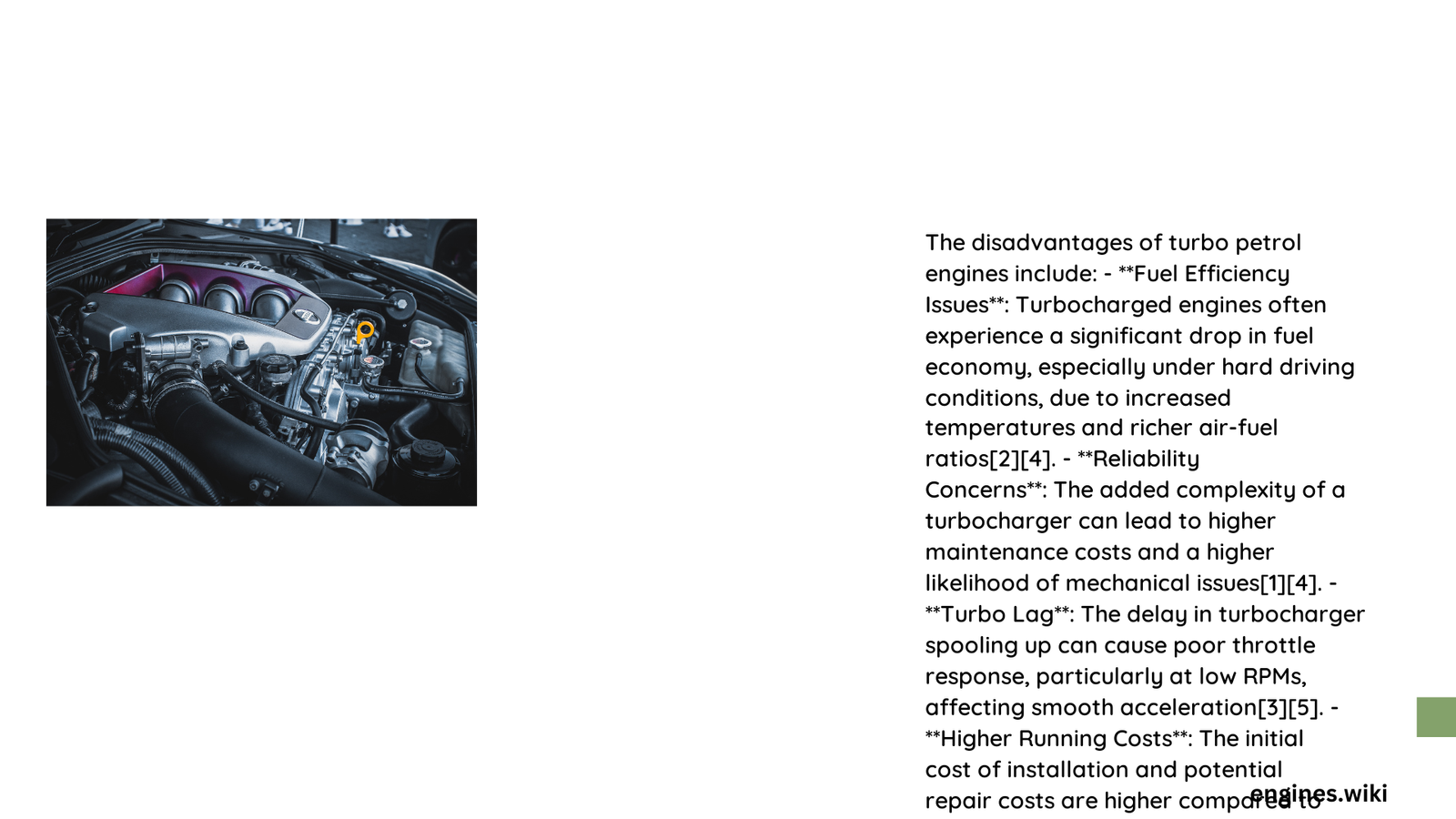Turbo petrol engines, while promising enhanced performance and power, harbor significant technical limitations that can compromise driving experience and long-term vehicle reliability. These sophisticated powertrains introduce complex challenges ranging from delayed acceleration response and increased maintenance expenses to potential overheating risks and inconsistent fuel efficiency. Understanding these disadvantages is crucial for automotive enthusiasts and potential car buyers seeking informed purchasing decisions.
What Causes Turbo Lag in Petrol Engines?
Turbo lag represents a critical performance limitation in turbocharged engines. This phenomenon occurs when there’s a noticeable delay between accelerator pedal input and actual power delivery. Key factors contributing to turbo lag include:
- Exhaust Gas Dynamics: Insufficient exhaust gas flow at low RPMs
- Turbocharger Spin-Up Time: Mechanical delay in generating boost pressure
- Compressor Efficiency: Limitations in rapid air compression
Quantitative Turbo Lag Analysis
| RPM Range | Lag Duration | Performance Impact |
|---|---|---|
| 0-2000 RPM | 1-1.5 seconds | Significant Delay |
| 2000-3000 RPM | 0.5-1 seconds | Moderate Delay |
| 3000+ RPM | <0.5 seconds | Minimal Delay |
Why Do Turbo Petrol Engines Have Higher Maintenance Costs?

Turbocharged engines introduce additional mechanical complexity, resulting in:
- Increased Component Stress
- Higher thermal loads
- More intricate lubrication requirements
-
Advanced cooling system demands
-
Specialized Maintenance Needs
- Frequent turbocharger inspections
- Specialized oil change intervals
- Complex intercooler maintenance
Estimated Additional Maintenance Expenses
The average additional maintenance cost for turbocharged engines ranges between $500-$1,500 annually compared to naturally aspirated counterparts.
How Does Turbo Impact Fuel Efficiency?
Contrary to popular belief, turbo petrol engines don’t always guarantee superior fuel economy:
- City Driving: Often less efficient due to frequent acceleration
- Highway Driving: Potentially more economical
- Real-World Consumption: Varies significantly based on driving conditions
Fuel Efficiency Comparison
| Driving Condition | Turbo Petrol | Naturally Aspirated |
|---|---|---|
| City Driving | 20-25 MPG | 22-27 MPG |
| Highway Driving | 28-35 MPG | 25-32 MPG |
What Overheating Risks Exist in Turbo Engines?
Turbocharged engines are more susceptible to thermal management challenges:
- Higher Exhaust Temperatures
- Complex Cooling Requirements
- Potential Component Failure
Critical temperature thresholds:
– Normal Operating Range: 90-110°C
– Warning Zone: 110-120°C
– Critical Failure: >120°C
Additional Performance Limitations
- Reduced Low-End Torque
- Complex Electronic Management
- Potential Reliability Concerns
- Higher Manufacturing Costs
Conclusion Insights
While turbo petrol engines offer exciting performance potential, they demand careful consideration of their inherent technical compromises. Potential buyers should evaluate their specific driving requirements against these documented disadvantages.
